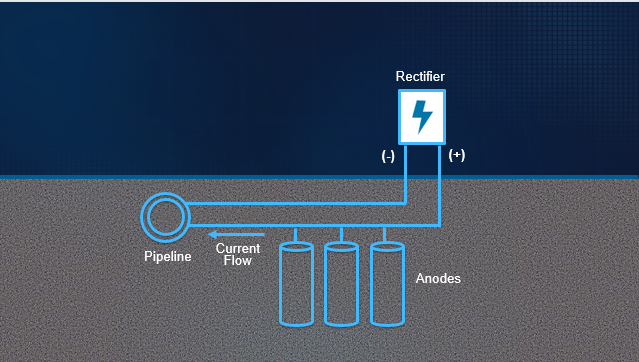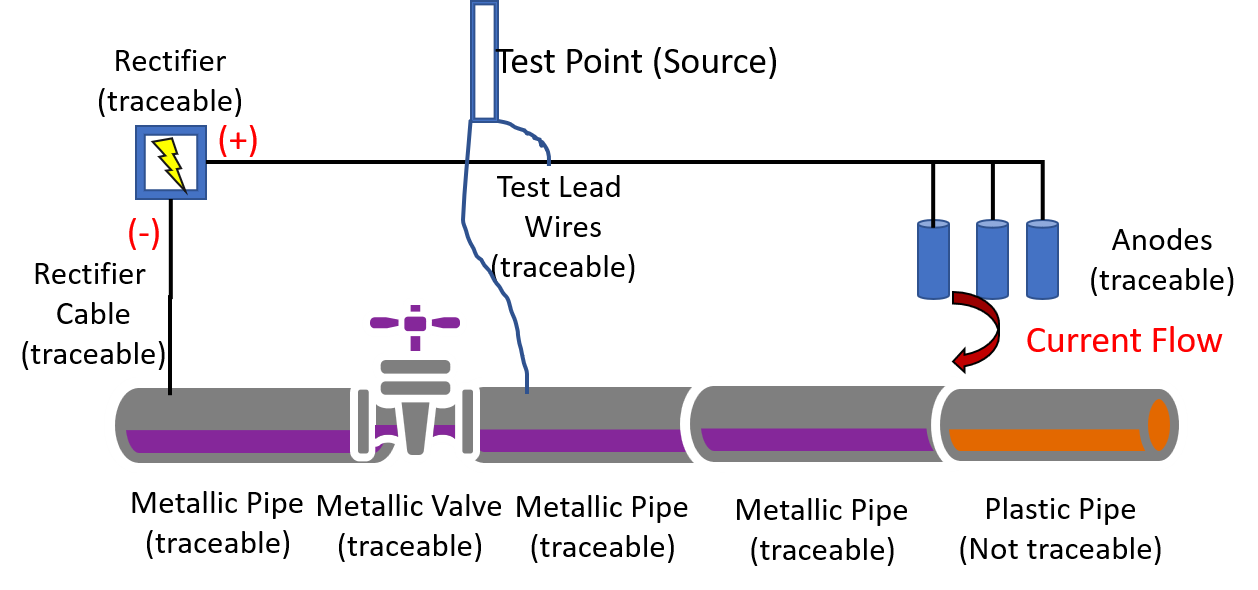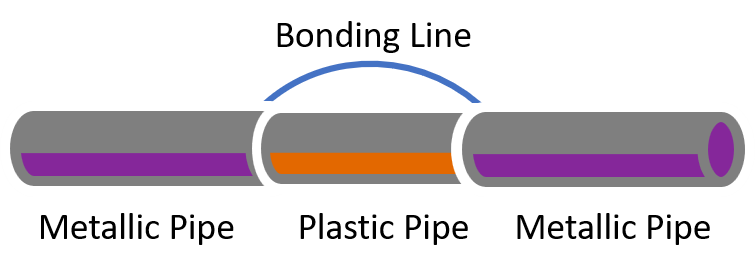- Home
- :
- All Communities
- :
- Industries
- :
- Gas and Pipeline
- :
- Gas and Pipeline Blog
- :
- Managing Cathodic Protection with UPDM 2019: The C...
- Subscribe to RSS Feed
- Mark as New
- Mark as Read
- Bookmark
- Subscribe
- Printer Friendly Page
 By Tom Coolidge and Tom DeWitte
By Tom Coolidge and Tom DeWitte
Part 2 of 3
Our first blog in this series provided an overview of how cathodic protection systems works to provide GIS professionals and IT administrators with enough knowledge to be able to correctly create a digital representation of a cathodic protection system utilizing Utility and Pipeline Data Model (UPDM) 2019 and the utility network.
This second blog goes into detail on the configuration of UPDM to manage the components which make up the cathodic protection system.
Many, many years ago, being new to the natural gas and hazardous liquid industries, the management of cathodic protection was a mystery. The data about the cathodic protection system was not being stored in the GIS along with the assets of the pipe system. When I asked the GIS staff about this, the common answer was that the cathodic protection group maintained their data separately. This leads to the next question. What system were they using? The most common answer I got was paper and colored pencils. That’s right the cathodic protection data was being manually maintained on a set of paper maps with colored pencils. And every winter the cathodic protection group would manually transpose the data from last year’s paper maps to the current year’s paper maps.

Over time, the cathodic protection data started to show up in more gas GIS systems. Most often it was an incomplete representation of the cathodic protection system. You might see some test points and anode beds, but they usually were not connected to the pipe system. Additionally, other important information such as insulators and rectifiers were commonly not mapped.
Some natural gas or hazardous liquid companies did map the entire cathodic protection system. But they needed special tools to manage and maintain this information.
With the release of UPDM 2019 and the utility network, it is now possible to maintain the entire cathodic protection system with the standard data management and editing tools provided by Esri.
No colored pencils required!
UPDM 2019
The 2019 edition of UPDM provides a template for organizing natural gas and hazardous liquid pipe system information. This data model is an Esri-structured geodatabase. It is written to be able to be used and managed with the standard data management tools provided by Esri’s ArcGIS products.
UPDM 2019 and Modeling Cathodic Protection Data
The release of UPDM 2019 introduces a new, simpler, and more complete data model for managing cathodic protection data in an ArcGIS geodatabase. These changes are intended to be used with the ArcGIS Utility Network Management Extension to allow for the modeling of the cathodic protection system.

Cathodic Protection Components in UPDM
The discrete components of a cathodic protection system modeled in UPDM 2019 are anodes, rectifiers, test points, wire junctions, and insulation junctions. The anodes, rectifiers, and test points are point features stored as asset groups within PipelineDevice featureclass.

These PipelineDevice features are not inline features of the pipe system. Instead they physically sit adjacent to the pipe system. These anodes, rectifiers, and test points are connected to the pipe system assets by wires and cables. The location where the test lead wires connect to the pipe system can be identified with the PipelineJunction AssetGroup type of Wire Junction. The modeling of test junctions is not required, as the UPDM default rulebase for the utility network also allows the wires and cables to connect directly to the PipelineLine pipe segments.
The location of insulators can be specified with the PipelineJunction AssetGroup type of Insulator Junction.
 The wires and cables are classified as bonding lines, rectifier cables, and test lead wires. Within UPDM they are stored in the PipelineLine featureclass.
The wires and cables are classified as bonding lines, rectifier cables, and test lead wires. Within UPDM they are stored in the PipelineLine featureclass.

Modeling Insulating Components
Within UPDM 2019, management of insulating pipe components is key to successfully modeling cathodic protection systems. From the perspective of modeling cathodic protection systems, the management of insulators is the defining of whether a pipe system component can be electrically traversed.
- Pipe system component is insulating = Not traversable
- Pipe system component is not insulating = Traversable
In ArcGIS and the utility network, we simulate traverseability with tracing. This means that if a pipe system component is not insulated, it is traversable which means it is traceable when defining a cathodic protection system.
- Pipe system component is insulated = Not traversable = Not traceable
- Pipe system component is not insulated = traversable = Traceable
In UPDM 2019, determination of whether a pipe system component is traceable is defined with the attribute: CPTraceability. The following UPDM featureclasses which participate in the utility network have the CPTraceability attribute:
- PIpelineLine
- PipelineDevice
- PipelineJunction
This attribute is assigned a coded value domain called: CP_Traceability. This coded domain has the following values:
Code | Description |
1 | Traceable |
2 | Not Traceable |
Coded Value Domains for CP_Traceability
Within the utility network properties predefined in UPDM 2019, this attribute has been associated to the network attribute: cathodic protection traceability. This allows the value to be utilized within the trace definition which is used to define the cathodic protection zone.
Within UPDM 2019, a pipe system asset is defined as being insulated by setting the BondedInsulated attribute to a value of “Insulated”. The following UPDM featureclasses which participate in the utility network have the BondedInsulated attribute:
- PipelineLine
- PipelineDevice
- PipelineJunction
The attribute BondedInsulated has been assigned the coded value domain: Bonded_Insulated. This coded value domain has the following values:
Code | Description |
1 | Bonded |
2 | Insulated |
Coded Value Domain for Bonded_Insulated
Management of Bonding Lines
Bonding lines are the wires which are used to extend the electrical connection of the cathodic protection system. They are used to span pipeline assets which are non-conductive.

Example of Binding Wire Spanning Plastic Pipe Segment
In some legacy GIS systems, the management of bonding lines was tedious. Data editors were required to draw in the bonding line and insure that is was connected to the metallic pipe system components on each end of the line. In the UPDM 2019 configuration, the need for geometry feature creation has been minimized by allowing an attribute on the non-conductive pipe system asset which is being spanned to indicate that the asset has been bonded. Instead of drawing the spanning bonding line, a user simply needs to change the attribute value of the attribute: BondedInsulated to a value of “Bonded”. This means that within the Utility Network, the spanned feature can be considered traceable.
Automating Cathodic Protection Data Management
The previously described attributes, Material, BondedInsulated and CPTraceability are the PipelineDevice and PipelineJunction attributes which UPDM 2019 and the utility network use to define a cathodic protection zone. The attributes AssetType, BondedInsulated and CPTraceability are used with PipelineLine.
Attribute Purpose | PipelineLine | PipelineDevice/ PipelineJunction |
Determine material type | AssetType | Material |
Determine whether bonded or insulated | BondedInsulated | BondedInsulated |
Determine CP traceability | CPTraceability | CPTraceability |
To provide automation and improve data quality, attribute rules were written to auto-populate the CPTraceability attribute based on the values of the AssetType, Material, and BondedInsulated attributes.
To explain the logic embedded within the CPTraceability attribute rules here are three scenarios:
- Scenario 1: Metallic Pipe Segment
- Asset Type = Coated Steel
- Bonded Insulated = null
- Scenario 2: Insulated Gas Valve
- Material = Steel
- Bonded Insulated = Insulated
- Scenario 3: Plastic Pipe Spanned by Bonding Line
- Asset Type = Plastic PE
- Bonded Insulated = Bonded
In each of these scenarios the CPTraceability attribute is automatically populated by the UPDM 2019-provided attribute rules.
- Scenario 1: Metallic Pipe Segment
- Asset Type = Coated Steel
- Bonded Insulated = null
- CP Traceability = Traceable
- Scenario 2: Insulated Gas Valve
- Material = Steel
- Bonded Insulated = Insulated
- CP Traceability = Not Traceable
- Scenario 3: Plastic Pipe Spanned by Bonding Line
- Asset Type = Plastic PE
- Bonded Insulated = Bonded
- CP Traceability = Traceable
To have the CP Traceability attribute correctly set, all the editor must do is insure that the Material/AssetType and the BondedInsulated attributes are correctly set.
Conclusion
The new enhanced representation of cathodic protection data in UPDM 2019 makes managing a digital representation of your cathodic protection data easier. This enhanced presentation can be created and maintained with the standard tools provided by ArcGIS Pro and the standard capabilities provided by the utility network.
In the third and final blog of this series, we will dive into how the utility network enables organizations to understand cathodic protection zones, discover when an insulating fitting or device stops the electric circuit of the cathodic protection zone, and which pipe materials are non-conducting.
All of this is done without colored pencils.
PLEASE NOTE: The postings on this site are our own and don’t necessarily represent Esri’s position, strategies, or opinions
You must be a registered user to add a comment. If you've already registered, sign in. Otherwise, register and sign in.